JMT Section Hike: Duck Pass to Bishop Pass
- Distance: 85.68 miles
- Elevation: +17932’ -17219'
- Map: Caltopo
- Trip Dates: July 27, 2024 - August 2, 2024
We just completed our longest backpacking journey yet: 86 miles in seven days! The participants: Maya (who will soon turn 12 and is already an experienced backpacker) and myself. This time, we chose to hike a section of the famous John Muir Trail, heading south. We began early in the morning on the Duck Pass Trail, departing from the Mammoth Lakes area, and finished the trek at South Lake, near Bishop.
Throughout the hike, we crossed four mountain passes and walked along dozens of alpine lakes and rushing rivers. While I’d love to share every single moment, to keep the post concise, I’ve chosen to focus on a few of the highlights of our journey.
Day 1: Duck Pass and Purple Lake to Squaw Lake
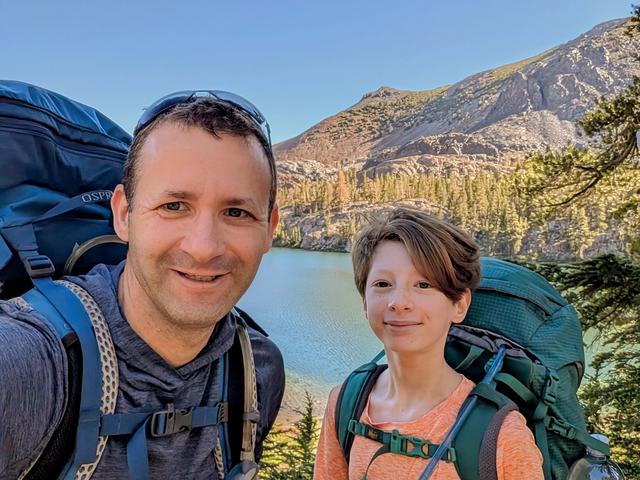
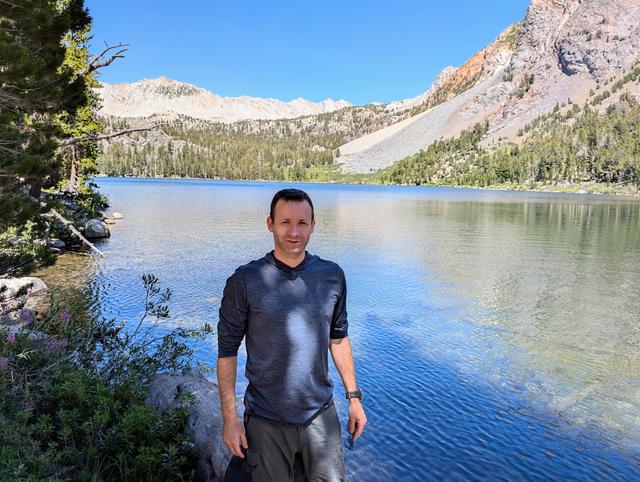
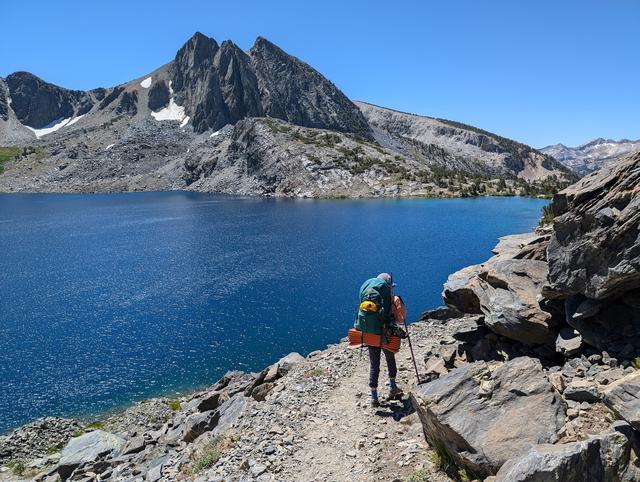
Day 2: Silver Pass and Mono Creek
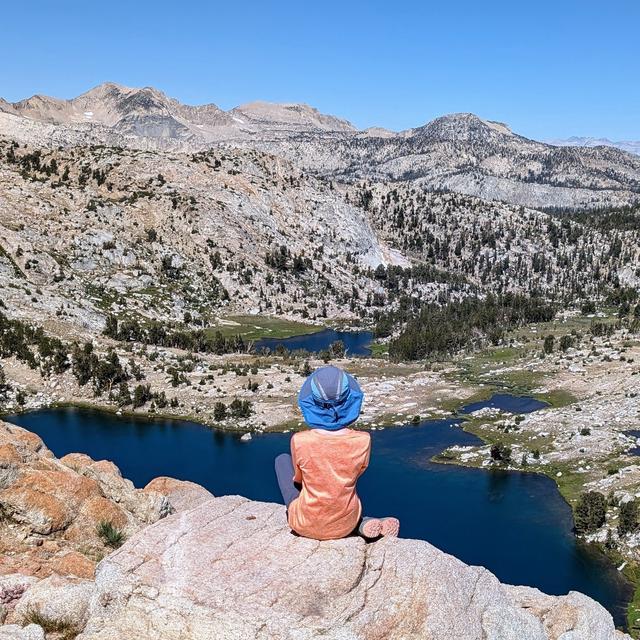
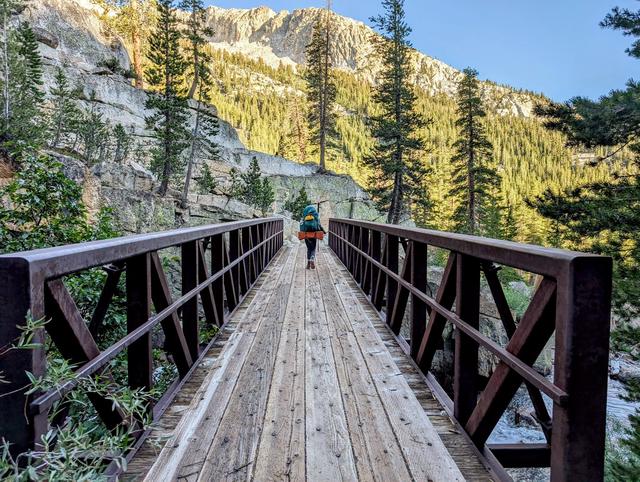
We spent the night on a granite slab overlooking Bear Creek canyon.
In the mornings, to help me pack up quickly, Maya pulls out her sleeping pad and bag, squeezing in a few more minutes of sleep outside the tent. Meanwhile, I’m busy making breakfast and snapping photos. Talk about teamwork!

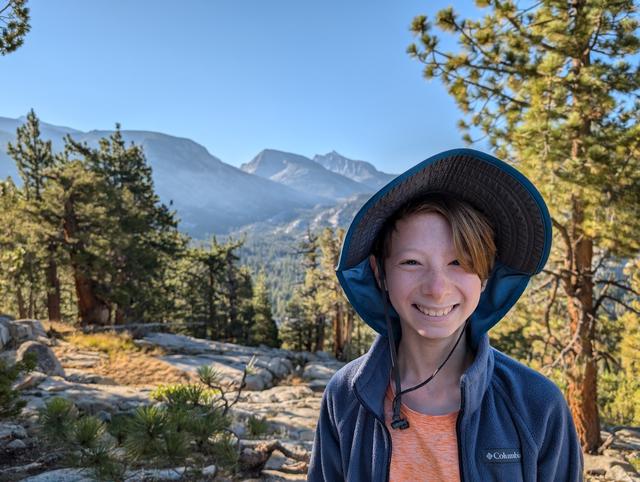
Day 3: Marie Lake, Selden Pass, Heart Lake and Sallie Keyes
In day 3 we visited and swam in the beautiful Marie Lake. As we ascended Selden Pass the views behind us were stunning.
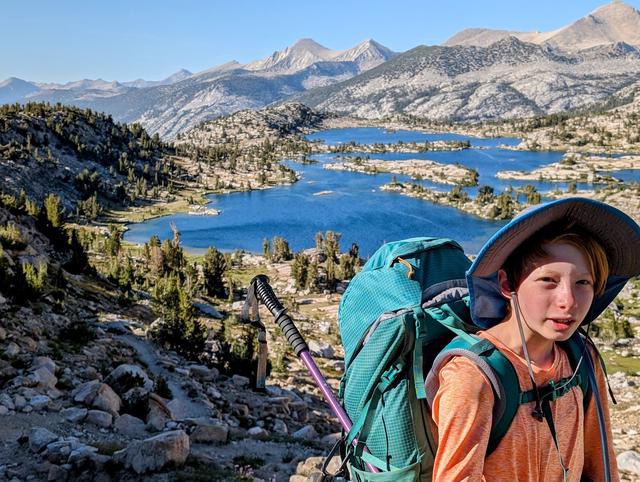
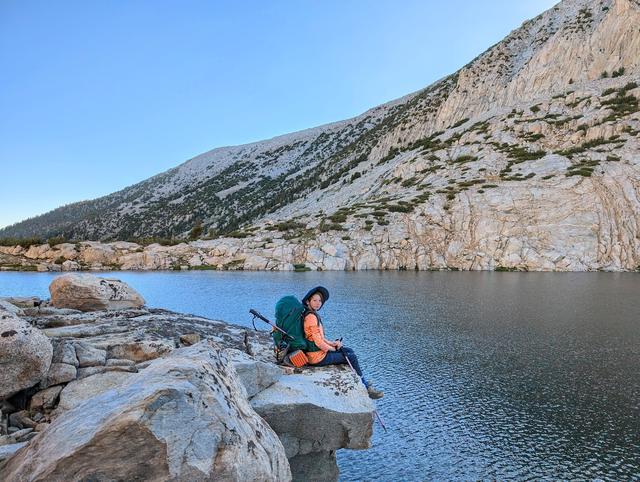
We spent the night in a forested area near the south end of Sallie Keyes lake. We observed that the northern side has more dramatic campsites, but access to the water seemed more tricky.
Day 4: Descending to Muir Trail Ranch and San Joaquin River Crossing
Resupply at Muir Trail Ranch
To avoid carrying food for seven days, we took advantage of the option to send a food bucket in advance, which we could collect about half a mile off the trail at an isolated farm called Muir Trail Ranch. About three weeks before departure, we bought a bright orange bucket at Home Depot, filled it with goodies for the second half of the journey, and decorated it with drawings and stickers. We even added treats that we usually don’t carry due to their weight, like canned fruit salad and chocolate pudding.
We mailed the bucket, and from there, it was transported by boat and later loaded onto a mule or horse to reach the remote Muir Trail Ranch. When we arrived at the ranch, we found our bucket and enjoyed the treats we had sent to ourselves. We were also surprised to discover that the ranch offers free access to items from buckets left behind by other hikers. Everything is sorted by category: meals, energy bars, batteries, hygiene products, etc. Maya had a great time searching for “treasures” in the buckets and even picked up a few breakfasts to try. We didn’t have room to take all the food we had sent ourselves, so we left a good amount of our bucket’s contents for the next hikers.
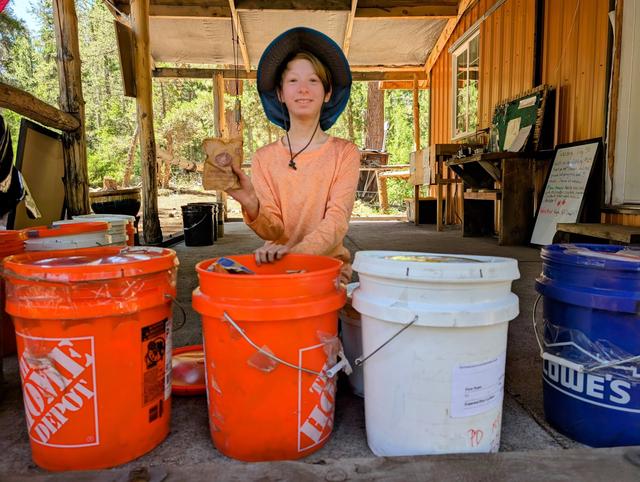
San Joaquin River Crossing
Our main concern before the trip was crossing the San Joaquin River. In the winter of 2023, the bridge over the river collapsed due to flooding. Like many other hikers, I spent months researching alternative plans—from searching for wider, calmer crossing points to planning long detours via other trails. To our great relief, during the hike, we met hikers coming from the opposite direction who informed us that a temporary bridge had been installed over the river just two days before our scheduled crossing. The new bridge was extremely narrow and bouncy, making the crossing both a unique experience and a huge relief. “Fear not!” was our motto.
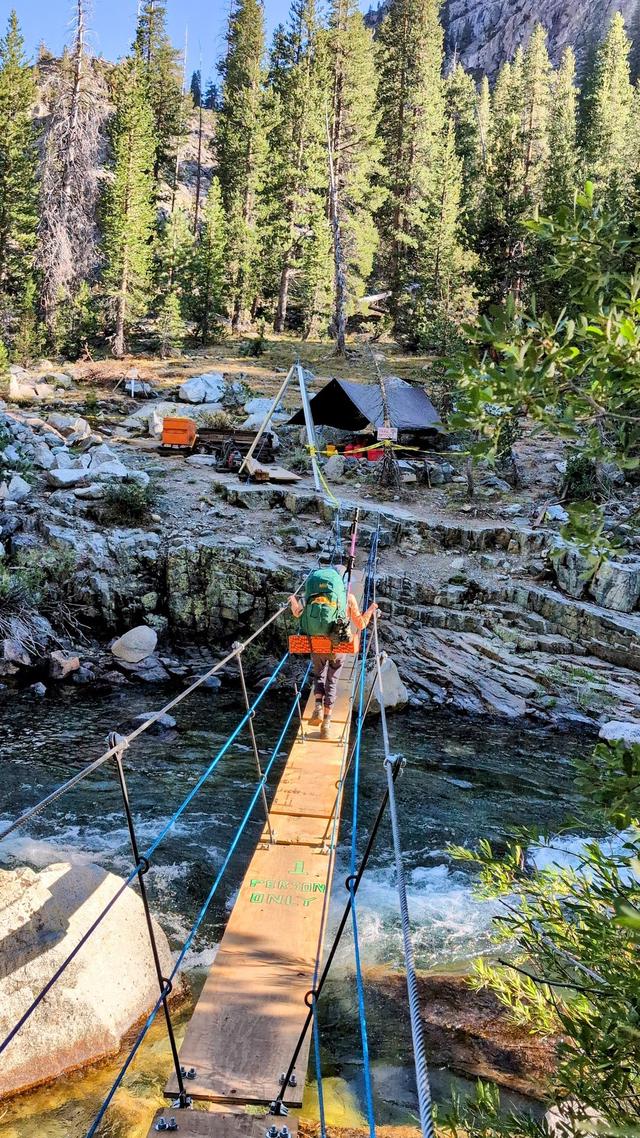
Day 5: Evolution Basin
Evolution Basin
Many consider Evolution Basin one of the most beautiful spots on the JMT, perhaps in the entire Sierra. Indeed, it exceeded all of our expectations. On the fifth night, we set up our tent on a granite slab near Evolution Lake and went for a refreshing swim in its clear waters. Upon returning, we were surprised to find a friendly family of deer wandering peacefully among the tents. The magic and unique beauty of the place are simply indescribable, especially during the sunset and sunrise hours.

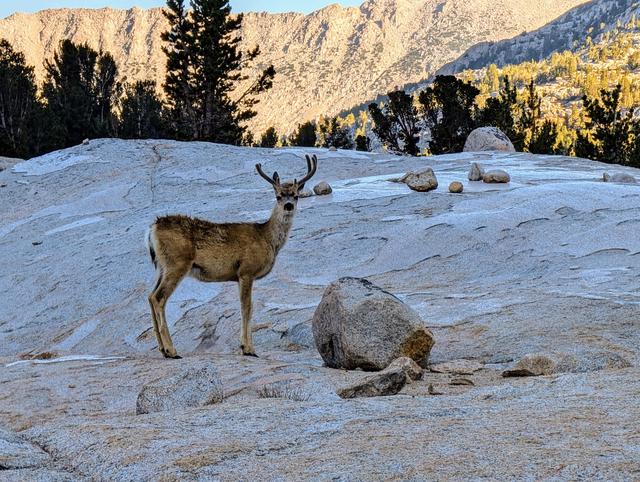
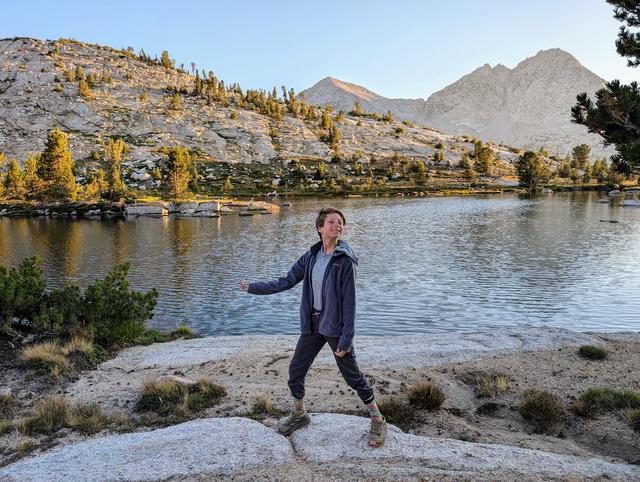
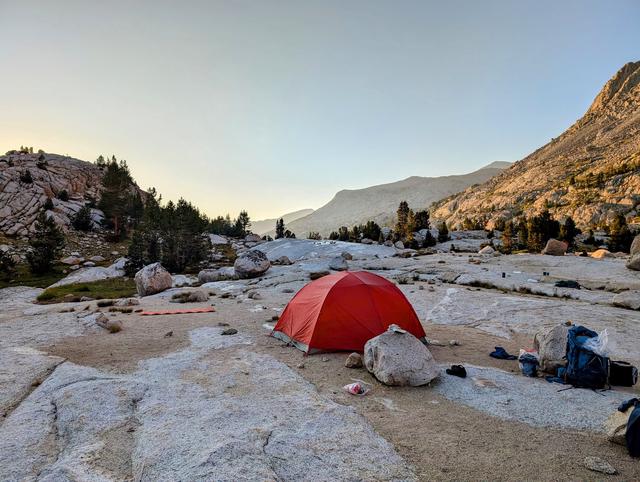
Day 6: Muir Pass
On the sixth day of the hike, we climbed out of Evolution Basin and crossed Muir Pass (elevation 11,955 feet). At the peak, we found the iconic Muir Hut, built from stones gathered nearby. The structure serves as a shelter for hikers caught in storms while crossing the pass. We stopped there for lunch, and hikers we met informed us that a thunderstorm was forecasted for the area within the next 24 hours. With that in mind, we continued down from Muir Pass toward Le Conte Canyon. We decided that the next day we’d wake up at 5 AM and decide based on the weather whether to cross the final mountain pass of the trip—Bishop Pass—or wait for the storm to pass.
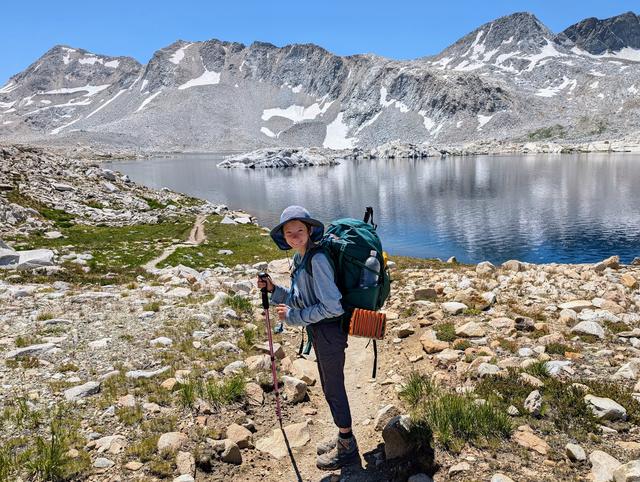

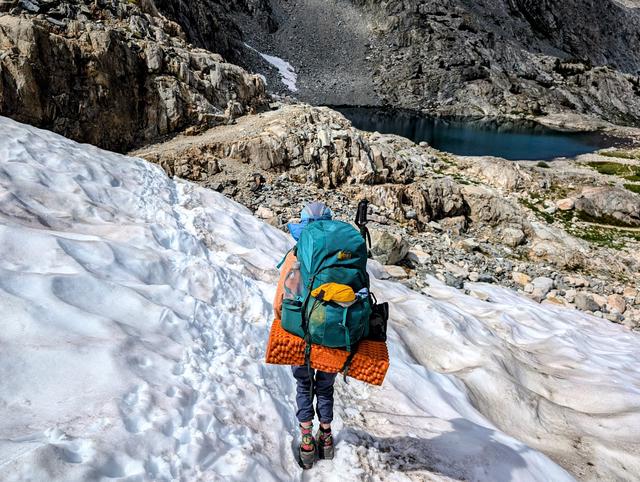
Day 7: Bishop Pass and South Lake
Fortunately, we woke up to clear skies and were able to cross Bishop Pass (elevation 11,972 feet) before noon. On the way down, it started to rain, which accompanied us for the final four miles of the hike. We donned our rain jackets and marched on under the gray skies. The rain washed the trails, and the cool air and scent of wet bushes were refreshing. The scenery turned more dramatic in the rain, making it a unique end to a challenging journey.
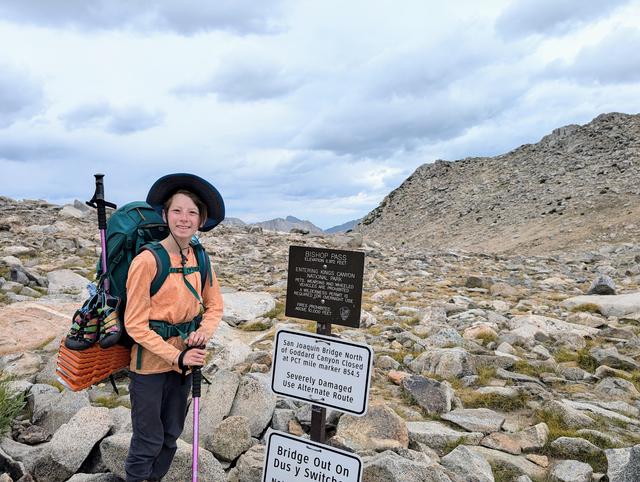
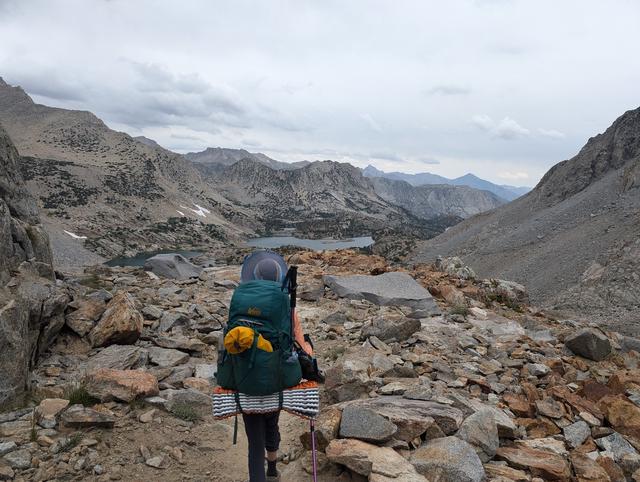
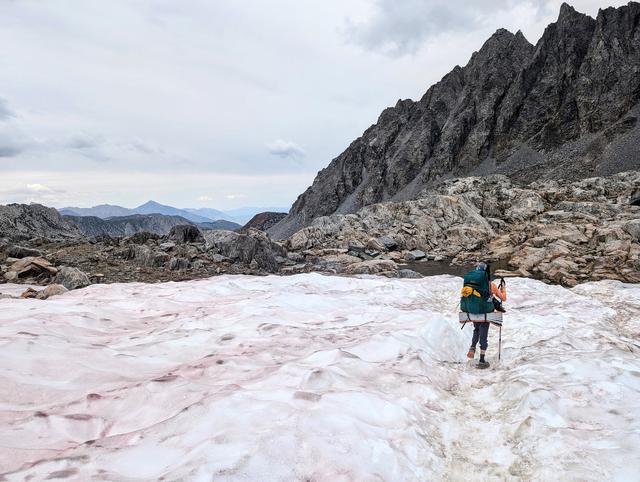
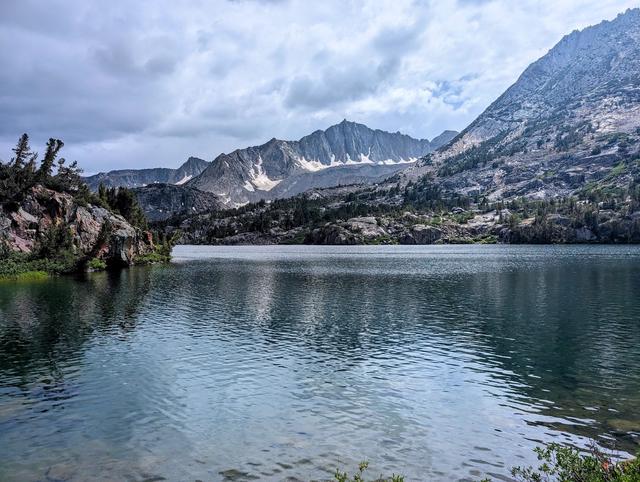
Summary
Total elevation gain over the seven days: 17,932 feet. Compared to the previous section we hiked on the JMT (from Mammoth Lakes to Yosemite), we felt this stretch presented a greater challenge, with longer distances and steeper climbs between destinations. This section required a different level of effort, but the stunning views, tranquility, and disconnection from the world made this journey an unforgettable experience.